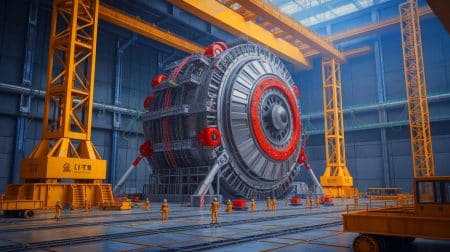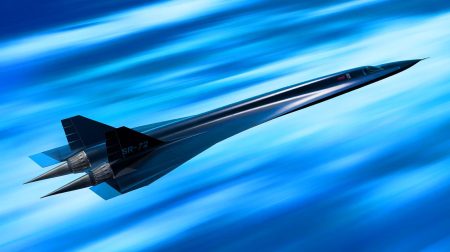| IN A NUTSHELL |
|
In a groundbreaking discovery beneath the Pacific Ocean, an ostensibly dormant underwater volcano off the coast of Vancouver Island has unveiled an extraordinary secret. What began as a routine geological survey swiftly morphed into an astonishing biological revelation: the volcano harbors a vast nursery where thousands—potentially over a million—giant eggs are nurtured by volcanic warmth. This unexpected find has left scientists both thrilled and puzzled, as they unravel the mysteries of this unique marine habitat. The implications of such a discovery are immense, shedding light on the intricate connections between geological activity and biological life.
A Volcano That Refused to Die
In 2019, researchers from Fisheries and Oceans Canada embarked on a deep-sea mission to explore a seamount rising more than 3,600 feet above the seafloor. Initially deemed extinct, the volcano astonished the team by venting mineral-rich hot water, signaling ongoing geological activity. This natural heat source has created a rare sanctuary for marine life, particularly nurturing communities of deep-sea corals and sponges. However, the true marvel unfolded when scientists observed white skate rays (Bathyraja spinosissima) depositing eggs in abundance across the volcano’s summit, situated nearly a mile below the surface. This unexpected biological hotspot has become a focal point for understanding the symbiotic relationship between the Earth’s geological and biological processes.
An Unprecedented Egg Deposit
While deep-sea rays are familiar to marine biologists, the sheer scale of this reproductive event was unprecedented. Initial counts and image surveys suggest the site could host hundreds of thousands, potentially over a million, eggs—a phenomenon never documented for this species before. The size of the eggs adds another layer of intrigue. These rays produce egg cases nearly 20 inches long, resembling soft, curved pillows. This energy-intensive reproductive strategy ensures that each embryo is equipped with ample nutrients necessary for survival in the deep sea’s harsh conditions, highlighting a remarkable adaptation to extreme environments.
Volcanic Warmth: Nature’s Incubator
White skate rays typically inhabit depths between 2,600 and 9,500 feet, making them elusive subjects for study. However, scientists now theorize that these rays may strategically utilize hydrothermal warmth to expedite embryonic development, a significant advantage in a cold, slow-moving environment. According to marine biologist Cherisse Du Preez, incubation in such harsh conditions can extend up to four years, but the volcano’s residual heat might significantly reduce this period. Beyond warmth, the summit offers shallower, more sheltered terrain, providing a safe haven for hatchlings before they venture into deeper, perilous waters. This natural incubator exemplifies the dynamic interplay between Earth’s geological activity and the adaptability of marine life.
A Living Laboratory for Marine Evolution
This rare confluence of geology and biology presents researchers with a unique opportunity to study how extreme environments influence life. Similar to the hydrothermal vents discovered near the Galápagos, this site affirms that even the most formidable locations can sustain complex life forms. The adaptive strategy of these rays—laying large eggs in volcanically active areas—demonstrates an evolutionary brilliance that may have gone unnoticed for centuries. While the full extent of species inhabiting this hidden volcano remains unknown, this discovery serves as a poignant reminder of the vast unexplored frontiers beneath the surface, ripe for scientific inquiry and discovery.
A Call for Conservation and Curiosity
As the enigma of the million eggs unfolds, it brings a renewed urgency to protect deep-sea ecosystems. These volcanic oases are fragile, and with deep-sea mining and climate change posing threats to marine habitats globally, discoveries like this emphasize the need for responsible exploration and global cooperation in preserving what we’ve only begun to understand. This isn’t merely a story about a volcano or a rare marine species. It’s a compelling reminder that the deep ocean holds secrets more profound than we can imagine—secrets that challenge our understanding of life and underscore the interconnectedness of our planet. As we continue to uncover the ocean’s mysteries, what other wonders await discovery beneath its depths?
Did you like it? 4.4/5 (20)









Wow! A million eggs?! Nature never ceases to amaize. 🥚🌊
How long before these eggs hatch? Are they all expected to survive?
booooooo, using genAI images in your article is unbelievably tacky, and makes you look lazy. almost turned me away entirely. do better!
This is incredible! Protecting these ecosystems should be a top priority. 🌋🐟
booooooo, using genAI images in your article is unbelievably tacky, and makes you look lazy. almost turned me away entirely. do better!
Just imagine the data we could get from studying these eggs!
What a fascinating discovery. Thank you for the detailed report. 🙏
Great read, but you guys shouldn’t be using AI to generate images.
Great read, but you guys shouldn’t be using AI to generate images…
Are there any similar discoveries in other parts of the world?
How did scientists first come across this underwater volcano?
What measures are being taken to protect this newfound ecosystem?
Could the eggs be affected by pollution or climate change? 🌍
Sounds fishy to me… 🤔
Great article! Very informative and eye-opening. Thanks!
So cool! How do they count the eggs? Seems like a huge task!
Lol..was gonna say ..how do we know this is not how the end begins?
What are the potential threats to this ecosystem?
Not sure if I believe this… a million eggs? Really?
Does this mean the volcano could erupt again, endangering the eggs?
How does this discovery affect our understanding of marine biology?
Honestly, I’m more interested in the volcano itself than the eggs.
Could these eggs be harvested for research, or would that be harmful?
This is both amazing and concerning. We must protect these areas!
Egg-citing news! Can’t wait to hear more updates. 🥳
Is there any danger to the marine life from the volcanic activity itself?
How does volcanic warmth aid in the incubation process?
Is there any footage or images from the site available to the public?
Who knew volcanoes can be nurturing too! 😅
Sounds like a sci-fi movie plot! 😄
this article would be a million times better if you didn’t use an ai generated image please and thanks xx 🙏‼️ easily could’ve used any image of the ocean just as a visual or maybe have someone draw the idea, do we really have to use ai for everything ❤️🩹
Salaam Alakium Eggs a plenty!! Does this means the white world of white supremacy is coming to a end? Just like the Mother Plane That the HONORABLE Elijah Muhammad and The HONORABLE Louis Farrakhan teaches about and u people thought they were crazy. There is more to c ome. U better liston to these Men of God.
… Godzilla.
Using AI-generated images for this article is wildly irresponsible.
Naive people will believe that an impossibly-shaped underwater volcano has spewed forth thousands of basketball-sized eggs based on that incompetent illustration. People with sharper eyes will see the faked images and suspect this entire work is a hoax.
We do not need more people to be skeptical of legitimate scientific research because of lazy and unnecessary practices in reporting.